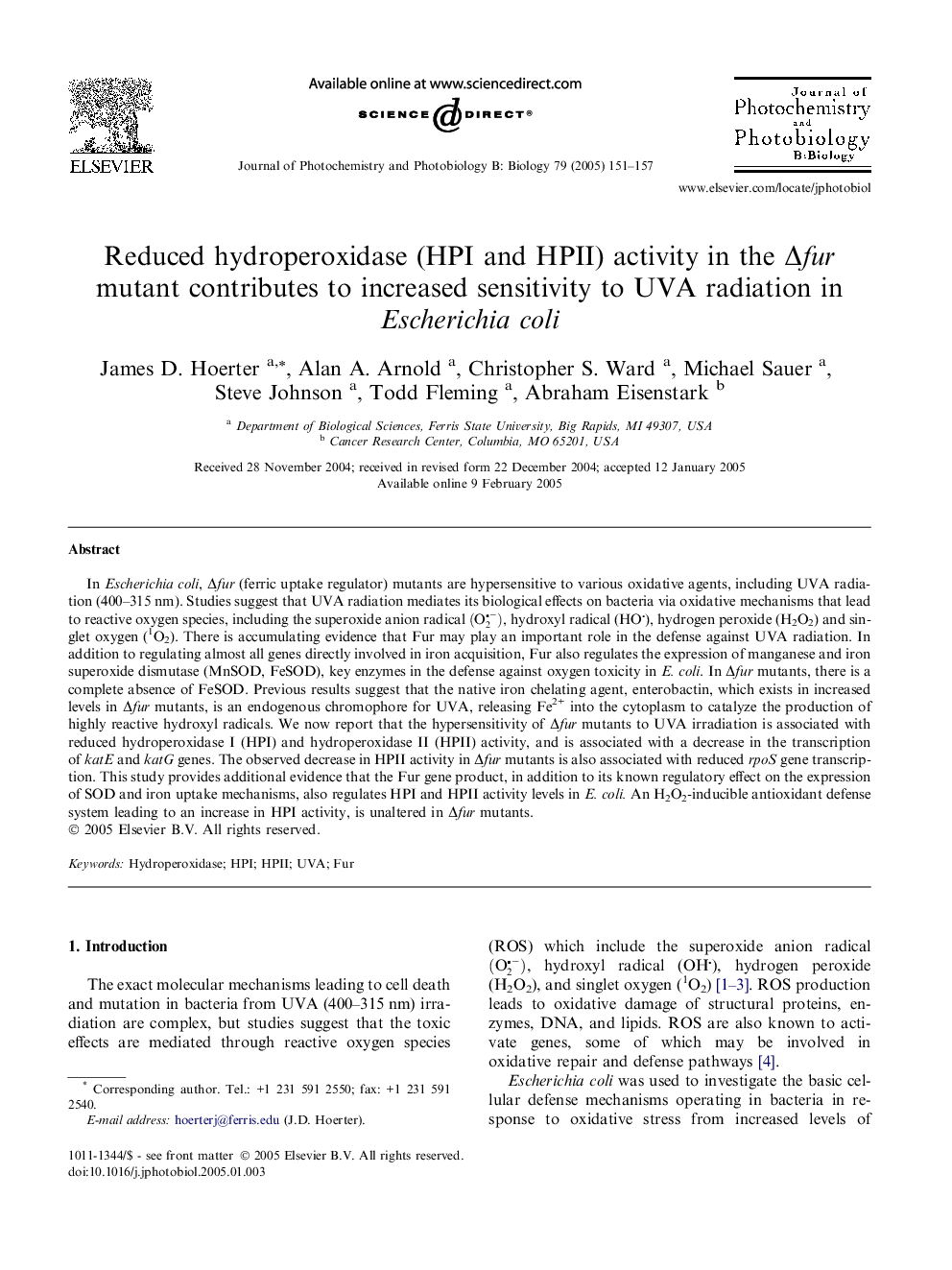| Article ID | Journal | Published Year | Pages | File Type |
|---|---|---|---|---|
| 9607063 | Journal of Photochemistry and Photobiology B: Biology | 2005 | 7 Pages |
Abstract
In Escherichia coli, Îfur (ferric uptake regulator) mutants are hypersensitive to various oxidative agents, including UVA radiation (400-315Â nm). Studies suggest that UVA radiation mediates its biological effects on bacteria via oxidative mechanisms that lead to reactive oxygen species, including the superoxide anion radical (O2-), hydroxyl radical (HO), hydrogen peroxide (H2O2) and singlet oxygen (1O2). There is accumulating evidence that Fur may play an important role in the defense against UVA radiation. In addition to regulating almost all genes directly involved in iron acquisition, Fur also regulates the expression of manganese and iron superoxide dismutase (MnSOD, FeSOD), key enzymes in the defense against oxygen toxicity in E. coli. In Îfur mutants, there is a complete absence of FeSOD. Previous results suggest that the native iron chelating agent, enterobactin, which exists in increased levels in Îfur mutants, is an endogenous chromophore for UVA, releasing Fe2+ into the cytoplasm to catalyze the production of highly reactive hydroxyl radicals. We now report that the hypersensitivity of Îfur mutants to UVA irradiation is associated with reduced hydroperoxidase I (HPI) and hydroperoxidase II (HPII) activity, and is associated with a decrease in the transcription of katE and katG genes. The observed decrease in HPII activity in Îfur mutants is also associated with reduced rpoS gene transcription. This study provides additional evidence that the Fur gene product, in addition to its known regulatory effect on the expression of SOD and iron uptake mechanisms, also regulates HPI and HPII activity levels in E. coli. An H2O2-inducible antioxidant defense system leading to an increase in HPI activity, is unaltered in Îfur mutants.
Keywords
Related Topics
Physical Sciences and Engineering
Chemical Engineering
Bioengineering
Authors
James D. Hoerter, Alan A. Arnold, Christopher S. Ward, Michael Sauer, Steve Johnson, Todd Fleming, Abraham Eisenstark,
